Look at the cart puller, porter, or even construction labors – how do they manage to work so hard throughout the day? They are mostly from Bihar, Odisha, West Bengal, or Madhya Pradesh, and the common factor noticed in their diet is Sattu. Sattu is highly nutritious, one of the pocket-friendly healthy food options in India. It’s difficult to ignore Bengal gram sattu nutrition potential.
Wondering what is sattu? Sattu is roasted Bengal gram/Chickpea or Barley/Jau flour. Sattu nutrition largely depends on its key ingredient.
Bengal gram (Cicer arietinum) comes under the pulse category. Bengal gram sattu is rich in protein in terms of quantity as well as quality.
Barley (Hordeum vulgare) is a cereal. Therefore Barley sattu is rich in carbohydrates.
As the name suggests, here we will focus on Bengal gram sattu.

7 Nutrition facts of Sattu
Sattu is a powerhouse of nutrition. How? I can give you 7 nutrition facts of sattu which you can’t ignore. (1)
1. Bengal gram sattu is one of the rich sources of vegetarian protein
Bengal gram sattu is one of the rich sources of plant-based protein. It contains 22.5 g of protein per 100 g having a high biological value of 74.
Confused? What is the biological value (BV)? Well, it’s one of the indicators to assess the quality of protein. BV refers to how readily the digested protein gets utilized for protein synthesis in our body. It’s needless to say higher the number better the quality.
Having a good balance in quantity as well as in quality makes Bengal gram sattu a perfect choice for breakfast, snack or even as a pre-workout drink. It’s good for every age group and for almost every health condition except renal disease and high uric acid level.(5)
Table 1: Comparison of protein content (quantity) with biological value (quality) of Bengal gram along with few other foods
| Food | Protein content (g/100g) | Biological value |
| Groundnut | 25.3 | 55 |
| Soybean | 43.2 | 65 |
| Green gram | 24.0 | 70.4 |
| Bengal gram (roasted) | 22.5 | 74 |
| Red gram | 22.3 | 72 |
| Rice (parboiled, milled) | 6.4 | 80 |
| Wheat flour (whole) | 12.1 | 66 |
| Maize (dry) | 11.1 | 50 |
| Egg, Hen | 13.3 | 96 |
| Milk, Cow’s | 3.2 | 90 |
| Barley | 11.5 |
Reference- Nutritive value of Indian foods, NIN, 2016
Proteins are made up of amino acids. Our body is made up of essential and non-essential amino acids. As the name suggests, essential amino acids are crucial for body function. However, our body can’t produce them thus need to procure from food.
Bengal gram sattu, contain all the essential amino acids in high amount except two – Methionine and Cystine (sulfur-containing amino acids).(2)
Don’t worry. This deficiency can easily be fixed when Bengal gram sattu is mixed with any cereal (rice, wheat, etc) in a 1: 5 ratio. Therefore especially for underweight children, a homemade formula containing one part of sattu with five-part of any cereal flour works best as a complete protein. (3)
Table 2: Comparison of essential amino acids profile of Bengal gram with other pulses and Barley
| Essential Amino Acids (mg per g N ) | Bengal gram | Red gram | Green gram | Barley |
| Arginine | 570 | 360 | 500 | 300 |
| Histidine | 160 | 250 | 170 | 180 |
| Lysine | 440 | 480 | 460 | 230 |
| Tryptophan | 050 | 040 | 060 | 100 |
| Phenylalanine | 360 | 460 | 350 | 310 |
| Tyrosine | 180 | 130 | 100 | 180 |
| Methionine | 080 | 060 | 080 | 100 |
| Cystine | 080 | 060 | 060 | 100 |
| Threonine | 220 | 200 | 200 | 200 |
| Leucine | 580 | 450 | 510 | 420 |
| Isoleucine | 320 | 250 | 350 | 240 |
| Valine | 310 | 260 | 320 | 310 |
Reference- Nutritive value of Indian foods, NIN, 2016
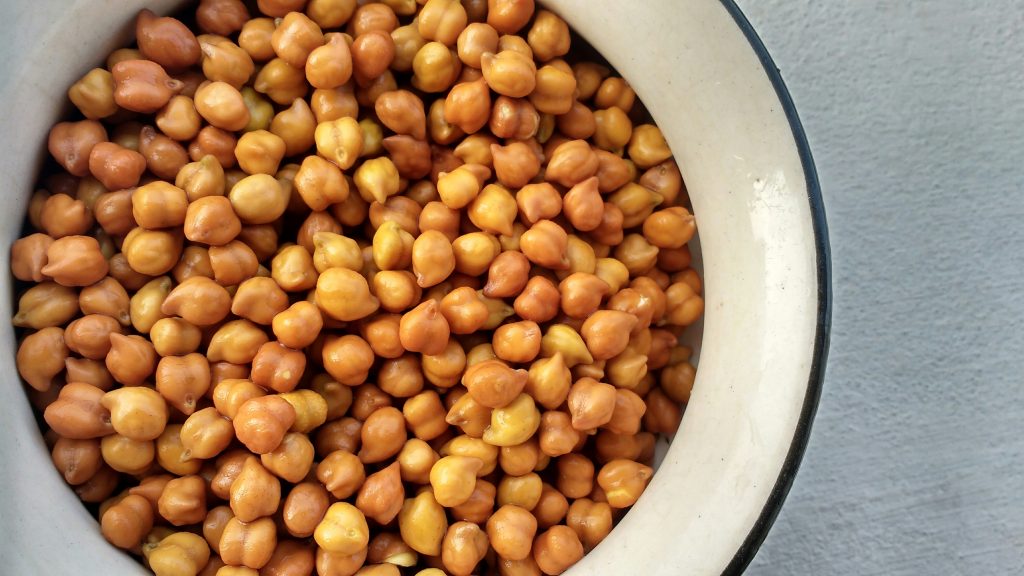
2. Bengal gram sattu contains a moderate amount of carbohydrate
Pulse, in general, contains a moderate amount of carbohydrates, and Bengal gram sattu is not an exception. It contains 58.1 g of carbohydrate per 100 g whereas for Barley sattu the amount is approx 69.6 g per 100g.
Table 3: Comparison of the carbohydrate content of Bengal gram with other pulses and Barley
| Foods | Carbohydrate content (g/100g) |
| Bengal gram (roasted) | 58.1 |
| Red gram (Arhar/Tuver dal) | 57.6 |
| Green gram (moong dal) | 59.9 |
| Black gram (urad dal) | 59.6 |
| Lentil (masoor dal) | 59.0 |
| Peas (roasted) | 58.8 |
| Rajmah | 60.6 |
| Barley | 69.6 |
Reference- Nutritive value of Indian foods, NIN, 2016
Just like the quality of protein, the quality of carbohydrates also matters a lot. This is largely determined by the two parameters – Glycemic index and glycemic load.
The Glycemic Index (GI) gives you an idea of how fast a particular food gets digested, absorbed in the body and affects your blood glucose levels. Lower the value (55 or less) is better for the health indicating slow digestion and absorption of the food with a steady rise in blood sugar level instead of a sudden spike.
The gradations of GI –
- Low: 55 or below
- Moderate: 56 to 69
- High: 70 and above
Glycemic load (GL) considers the number of carbohydrates as well as the GI in a serving of food. Again lower the number (10 or less) is better for diabetes. The gradations of GL –
- Low: 0 to 10
- Moderate: 11 to 19
- High: 20 and above
Check the table below to find out how Bengal gram sattu falls in low GI as well as in low GL. This makes sattu favorable food for people suffering from diabetes, PCOD, etc. Since foods having low GI get digested and absorbed slowly they give better satiety value and keep you full for a longer time. Therefore Bengal gram sattu is also a good choice for weight loss. (4,13, 14,19,20,22)
Table 4: Comparison of glycemic index and glycemic load of Bengal gram along with a few common foods
| Food items | Glycemic Index (GI) (Glucose=100) | Serving size | Glycemic Load(GL) per serving |
| Bengal gram | 28 | 3/4th Cup | 3 |
| White rice (Boiled) | 66 | 1 Cup | 35 |
| Lentils,Boiled | 29 | 1 Cup | 7 |
| Rajmah, Boiled | 28 | 1 Cup | 8 |
| Barley, Boiled | 28 | 1 Cup | 11 |
| Cornflakes | 81 | 1 Cup | 21 |
| Coca cola | 63 | 250 ml | 16 |
| Popcorn (air fired plain) | 72 | 2 Cups | 5.6 |
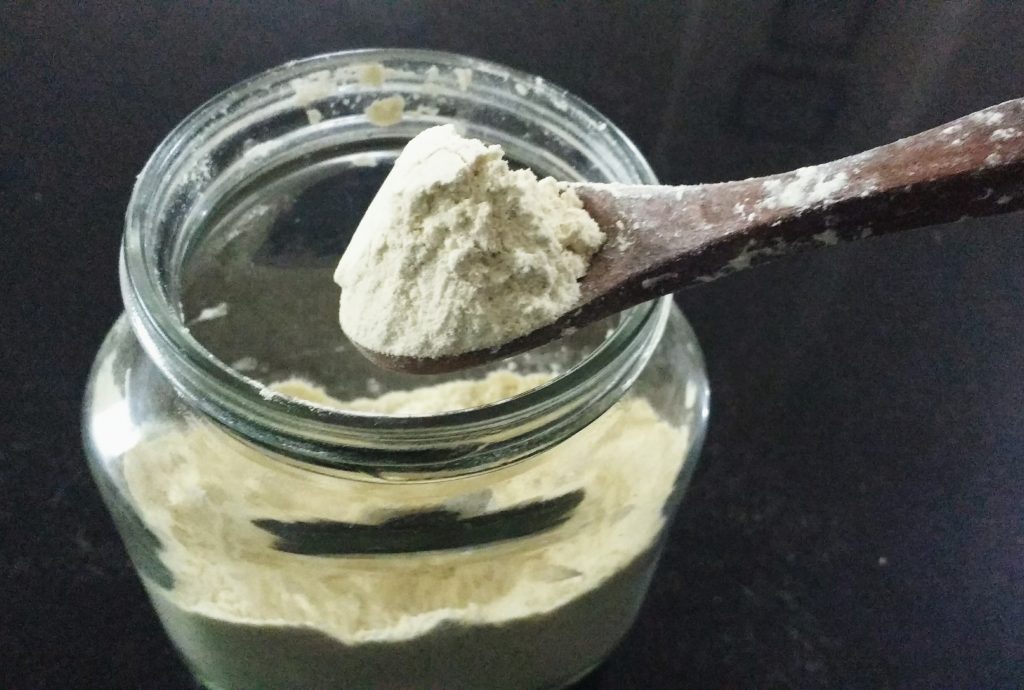
3. Bengal gram sattu is rich in fiber
There are two types of carbohydrate present in every natural food –
Available carbohydrate (mono and disaccharides – which get digested easily by the enzyme)
Unavailable carbohydrate (dietary fiber – which does not get digested by the enzyme) This can be subdivided into –
soluble fiber (attracts water, swell, slows digestion) and
insoluble fiber (attracts water to stool, makes it soft and easy to pass).
Bengal gram(whole) contains a high amount of fiber with a majority of insoluble fiber. However, sattu is roasted, dehulled (outer skin removed) and ground form of Bengal gram thus contains less fiber.
Fiber is good. It slower digestion, prevent a sudden spike in blood sugar level, keeps yourself full for longer, prevents constipation, etc. Going by this logic, Bengal gram sattu is very good for diabetes, weight loss, constipation, etc.
But dietary fiber is good but not in excess. Note that fiber contains anti-nutritional factors that prevent the absorption of nutrients like iron, zinc, calcium, make nutrients unavailable to the body, and may also create gas, acidity, indigestion, etc. So if you have poor digestion capacity, often suffer from acidity, bloating, etc you better need to process sattu to get all its benefits without causing any side effects. How? The process is given in detail towards the end of this article. (21)
Table 5: Comparison of fiber content of Bengal gram with other pulses
| Common Pulses | Total dietary fibre (g/100 g) | Insoluble dietary fibre (g/100 g) | Soluble dietary fibre (g/100 g) |
| Bengal gram (whole) | 28.3 | 25.2 | 3.1 |
| Red gram (Arhar/Tuver dal) | 9.1 | 6.8 | 2.3 |
| Green gram (moong dal) | 8.2 | 6.5 | 1.7 |
| Black gram (urad dal) | 11.7 | 7.6 | 4.1 |
Reference- Nutritive value of Indian foods, NIN, 2016
4. Bengal gram sattu holds good fat
100g of Bengal gram sattu contains 5.2 g of fats. Analysis of fatty acid content shows it’s high in polyunsaturated fatty acid (PUFA), moderate in monounsaturated fatty acids (MUFA), and least in saturated fat.
The health benefits of PUFA and MUFA are already well established. It’s good for improving insulin levels and keeping blood sugar in better control. Besides this, it helps to lower bad cholesterol levels, improve blood lipid levels, reduce chances of clot formation in the artery, and improve heart health. (6,7,23, 24,25)
Table 6: Comparison of the fat content of Bengal gram with other pulses and Barley (g/100g)
| Foods | Fat content | Total Saturated fatty acid | Total Monounsaturated fatty acid (MUFA) | Total Polyunsaturated fatty acid (PUFA) |
| Bengal gram (roasted) | 5.2 | 0.57 | 1.2 | 3.7 |
| Red gram (Arhar/Tuver dal) | 1.7 | 0.48 | 0.1 | 1.1 |
| Green gram (moong dal) | 1.2 | 0.45 | 0.05 | 0.8 |
| Black gram (urad dal) | 1.4 | 0.3 | 0.2 | 0.8 |
| Lentil (masoor dal) | 0.7 | 0.30 | 0.4 | 0.96 |
| Peas (roasted) | 1.4 | 0.26 | 0.4 | 0.95 |
| Rajmah | 1.3 | 0.4 | 0.2 | 1.2 |
Reference- Nutritive value of Indian foods, NIN, 2016
5. Bengal gram sattu is an energy-dense food option
100 g of Bengal gram provides 369 kcal of energy which is comparable to barley (336 kcal), rice (346 kcal), and whole wheat flour (341 kcal). This is another major reason to consider sattu as a breakfast or snack option. Note, that sattu does not provide instant energy but releases it in a slow but steady manner providing good satiety for a longer period.
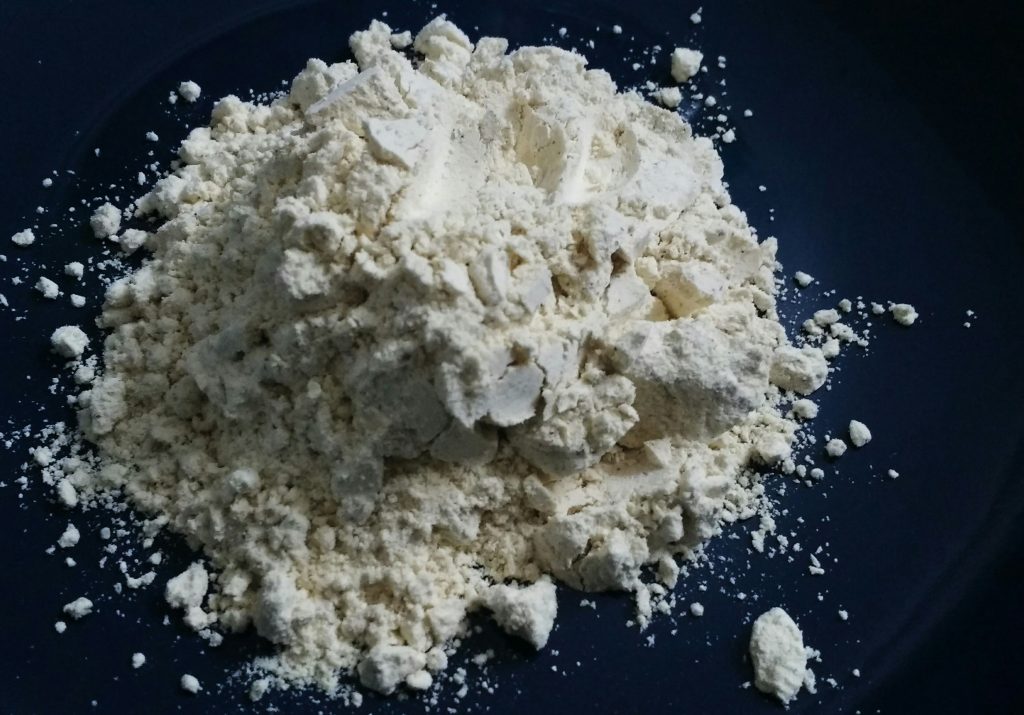
6. Bengal gram sattu provide a good amount of vitamin B complex
The vitamin content of Bengal gram sattu is given below in table 7. It’s rich in vitamin B complex essential for energy production and multiple other physiological functions. Bengal gram sattu made from germinated seeds has even better vitamin content as sprouting enhances the vitamin level and makes it more and more available to the human body.
Table 7: Comparison of the vitamin content of Bengal gram and Barley (g/100g)
| Vitamin | Bengal gram | Barley |
| Carotene (ug) | 19 | 10 |
| Thiamine (mg)B1 | 0.30 | 0.47 |
| Riboflavin (mg) B2 | 0.15 | 0.20 |
| Niacin (mg) B3 | 2.9 | 5.4 |
| Pyridoxine (mg) B6 | – | – |
| Folic acid (ug) B9 | 16 | – |
| Vitamin C (mg) | 3 | 0 |
Reference- Nutritive value of Indian foods, NIN, 2016
7. Bengal gram sattu is a good source of minerals
Table 8 gives a comparative picture of the mineral content of sattu made from Bengal gram as barley. Bengal gram sattu is rich in iron, calcium, zinc, magnesium, phosphorus – all that plays a major role during metabolism. As mentioned earlier, Bengal gram sattu made from germinated and dehulled seeds provide minerals in a more absorbable form.
Table 8: Comparison of the mineral content of Bengal gram and Barley (g/100g)
| Minerals | Bengal gram | Barley |
| Mineral (g) | 3.0 | 1.2 |
| Calcium (mg) | 202 | 26 |
| Phosphorus (mg) | 312 | 215 |
| Iron (mg) | 4.6 | 1.67 |
| Magnesium (mg) | 119 | 21 |
| Sodium (mg) | 37.3 | – |
| Potassium(mg) | 0 | – |
| Copper (mg) | 1.1 | 1.19 |
| Manganese (mg) | 1.21 | 1.03 |
| Molybdenum (mg) | 0.15 | – |
| Zinc (mg) | 6.1 | 1.2 |
| Chromium (mg) | 0.008 | 0.016 |
| Sulphur (mg) | 179 | 130 |
Reference- Nutritive value of Indian foods, NIN, 2016
How to improve the digestibility, absorption, and utilization of nutrients in Sattu –
Bengal gram sattu is undoubtedly a desi superfood. It is high in protein, carbohydrates, and vitamins, and minerals. However, just like other pulses, Bengal gram contains few anti-nutritional factors. These factors hinder digestion, absorption, and utilization of nutrients in Bengal gram.
Factors that negatively impact digestion, absorption, and utilization of Bengal gram-
| The factor | Impact |
| Oligosaccharides of raffinose family of sugar | These carbohydrates can escape digestion due to lack of an enzyme(α-galactosidase) and digested by microflora in the gut producing flatulence |
| Protein with high molecular weight and very compact molecular structure | Reduce digestibility |
| Enzyme inhibitors | Protease inhibitors (inhibit protein digestion) Amylase inhibitors (inhibit carbohydrate digestion), |
| Phytic acid | Prevent absorption of minerals like calcium, iron, zinc, manganese, etc |
| Tannin | Prevent absorption of iron by creating complex |
| Trypsin inhibitors | Reduce biological activity of amino acid trypsin |
Want to buy sattu online? Follow this link –
Techniques that improve the utilization of nutrients in Sattu-
Don’t worry. Simple cooking techniques work wonder minimizing these hindering factors. You can make sattu following largely 2 techniques. Both these technique helps to improve the digestibility and absorption of the nutrients in sattu.
- Roasted-Outer coat removed-Grinded (the commercial one available in the shop)
- Germinated-Dried-Roasted-Grinded
Sattu made from Roasted-Outer coat removed-Grinded technique
Benefits –
Heat during roasting improves the protein quality by destroying the anti-nutritional factors. Complex protein breaks into simpler ones and becomes more available. (18)
The outer skin accounts for 80-90% of the total seed polyphenols. Removal of outer coating improves the protein digestibility and net protein utilization and reduction of fiber and anti-nutritional factors.
Best use for
Since the outer coat is removed, sattu made out of this technique has comparatively less fiber. This makes the nutrients more readily available in our bodies. If you have good digestion capacity or trying for weight gain or bodybuilding – this type of sattu is perfect for you. You may consider sattu water as your pre-workout drink.
Sattu made from Germinated-Dried-Roasted-Grinded technique
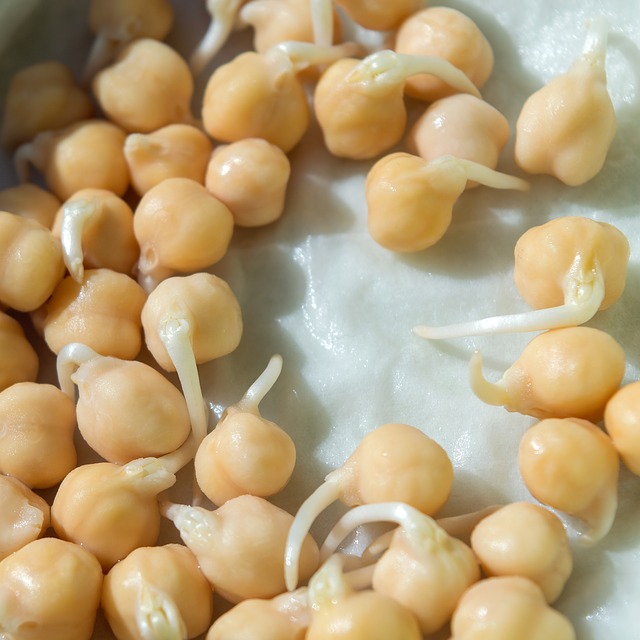
Benefits –
Soaking and germination help to reduce the oligosaccharide and phytic acid content of Bengal gram to a large extent. This step helps to remove the anti-nutritional factors – like phytic acid, tannins, phenols, α-amylase, and trypsin inhibitors significantly. Note that these anti-nutritional factors prevent the absorption of nutrients -like calcium, iron, etc.(8, 9, 10)
Besides this, germination help to increase the bioavailability of nutrients. Complex forms of nutrients converted to a comparatively simpler form and become easy to digest to a good extent
Roasting helps to improve the protein quality as well as increase the availability in our body. (11)
Best use for
As mentioned earlier, soaking and germination help to reduce the oligosaccharide content which is the key culprit causing flatulence. Sattu made using this technique contain comparatively more fiber. If you are suffering from frequent acidity, indigestion, flatulence, bloating, and trying for weight loss, sattu made following this technique is best for you. (12)
Bottom line
Bengal gram sattu is loaded with nutrition. It’s rich in protein, fiber, moderate in carbohydrate, contain good fat, vitamins, and minerals. The protein quality is also quite better compared to other vegetarian protein sources. Sattu can be consumed by all age groups and also safe in fact beneficial for most lifestyle diseases. It’s amazing to see sattu is a great impact on weight loss as well as on building muscle. It’s perfect for kids at breakfast. Sattu is a good option for health drinks as well. Properly processed sattu is easily digestible and great for you even if you have poor digestion capacity. What else do you want to call it a superfood?

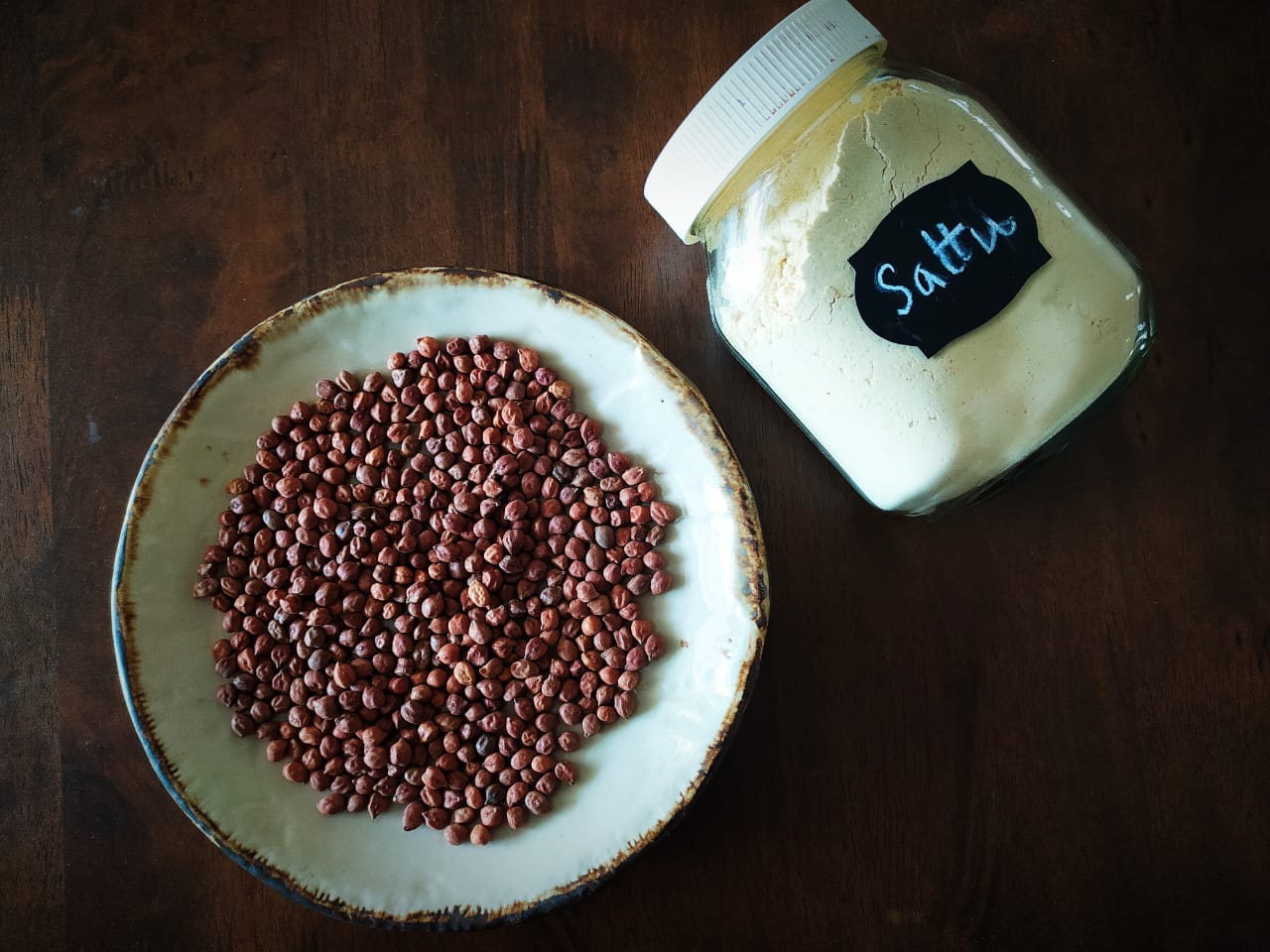
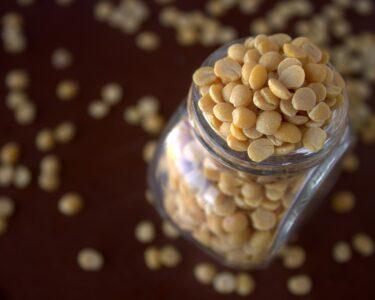

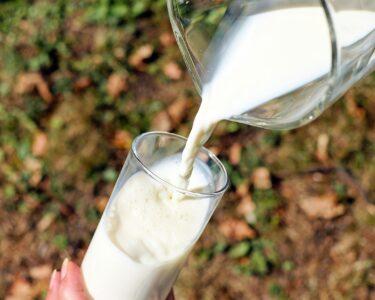
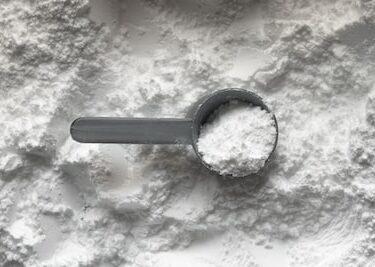
13 Comments